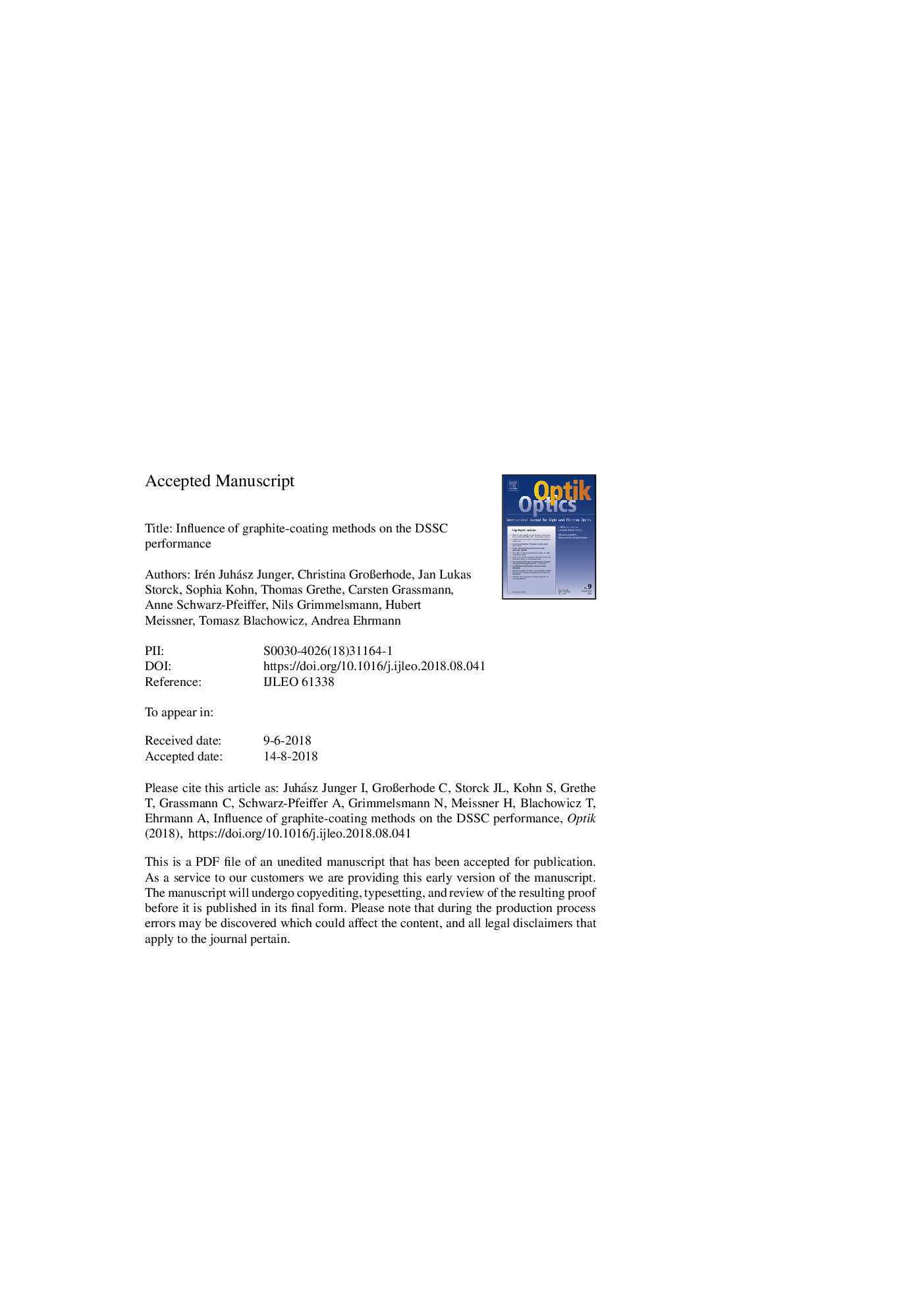| Article ID | Journal | Published Year | Pages | File Type |
|---|---|---|---|---|
| 8947747 | Optik - International Journal for Light and Electron Optics | 2018 | 15 Pages |
Abstract
Dye-sensitized solar cells (DSSCs) can be integrated into textile materials, enabling energy harvesting with blinds, tents, or other textile buildings. The different layers of such DSSCs have to be adjusted to the requirements of the textile industry, i.e. nontoxic and low-cost materials should be used. In this work, instead of the expensive platinum, graphite is used as a catalyzer. Different finishing methods characteristic for the textile industry, such as coating with a graphite dispersion and spraying, are tested in comparison with a graphite pencil which is often used for low-cost DSSCs. Spraying is found to yield DSSCs with better electrical properties and with significantly higher longevity than graphite dispersion and is thus further optimized. By carefully tailoring the spraying time and the resulting graphite layer thickness, the power conversion efficiency could be increased by a factor of 3.
Related Topics
Physical Sciences and Engineering
Engineering
Engineering (General)
Authors
Irén Juhász Junger, Christina GroÃerhode, Jan Lukas Storck, Sophia Kohn, Thomas Grethe, Carsten Grassmann, Anne Schwarz-Pfeiffer, Nils Grimmelsmann, Hubert Meissner, Tomasz Blachowicz, Andrea Ehrmann,
